Infant Summit 2019
September 17, 2019
As CNN anchor Alisyn Camerota remembers, it was just another day at work. Until it wasn’t. A routine prenatal check-up for Alisyn, then 30 weeks pregnant with twins, turned life changing when her doctor announced that she’d need to deliver her daughters within 48 hours. A rare condition was preventing one baby from receiving enough nutrition through the umbilical cord.
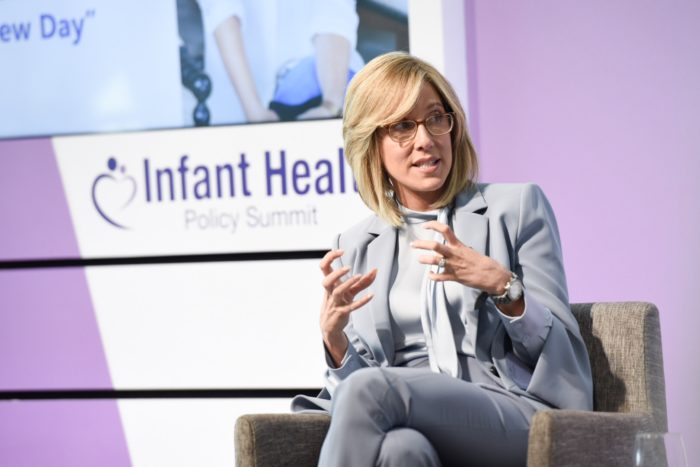
As Camerota explained during her keynote address at the fifth annual Infant Health Policy Summit, this was just one of the challenges she faced. Before her pregnancy, Camerota had struggled with infertility. After her daughters were both safely delivered and in the NICU, she faced breastfeeding challenges.
Camerota described attempting to pump breastmilk for days with no results. When she told her doctor she was ready to give up, he advised, “Give it one more day.” The next day, Camerota recalled, she produced her first drops of milk. The NICU nurses – “angels on Earth” – immediately put it into her newborn daughter’s feeding tube.
Camerota’s experiences resonated with the advocates, clinicians, patients and policymakers attending the summit. And the day’s lineup of interviews and panel discussions echoed themes from her story, especially the struggles and the triumphs of meeting infants’ needs.
Breastfeeding & Human Milk
Describing the value of human milk as a “cornerstone issue” for the National Coalition for Infant Health, Medical Director Mitchell Goldstein, MD, moderated a discussion of how human milk benefits the human microbiome. Human milk doesn’t just promote “good” gut bacteria but can reduce the risk in lower respiratory infections by 50%, explained Cynethia Bethel-Jaiteh, DNP, of the University of Louisville School of Nursing, and lower the risk of GI infections by 59%. It can also reduce the risk of necrotizing enterocolitis, explained Victoria Niklas, MD, of Prolacta Bioscience.
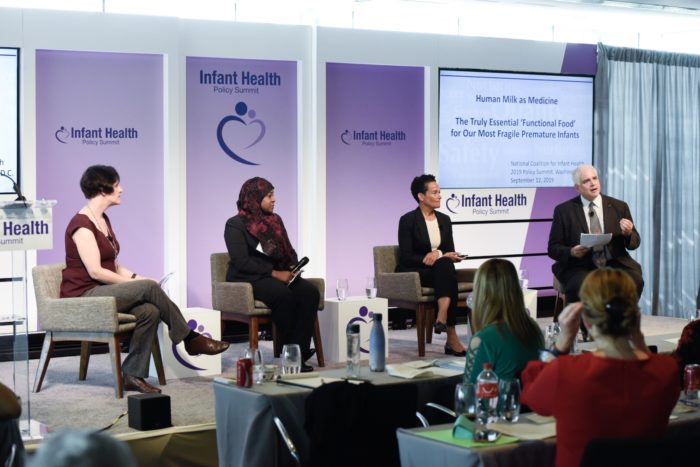
Deb Discenza of PreemieWorld recalled her own challenges pumping breastmilk for her premature daughter, born at 30 weeks gestation, while the hospital intended to give her daughter formula.
Vaccine Hesitancy
Incongruity between parents’ and health care providers’ intentions also came up during a panel discussion of preventable diseases and vaccine hesitancy in the United States. Daniel Salmon, PhD, of Johns Hopkins School of Medicine and Mary Koslap-Petraco, DNP, of Stony Brook University School of Nursing debunked widespread myths that have led to a rise in vaccine exemptions – and fueled outbreaks of preventable diseases. Topics included autism links, government overreach and misinformation about vaccine ingredients.
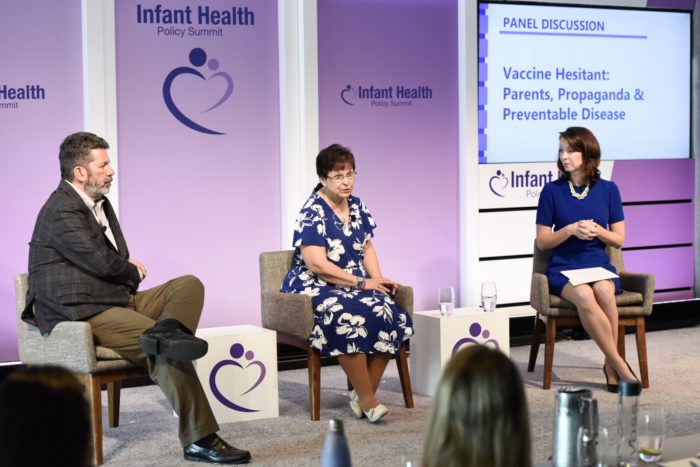
Both Salmon and Koslap-Petraco emphasized the importance of empathizing with parents and educating about the potential impact of vaccine-preventable diseases like measles, rubella and hepatitis B.
NICU Disparities
Good communication with parents of young children was also a central theme in a panel discussion about how to build patient-centered NICUs. DeShay Rice-Clansy, MSW, of Atlanta’s Grady Health System and Brigit M. Carter, PhD, RN, of Duke University School of Nursing described how the different demographics being served by NICUs can present strikingly different needs. One mother delivering her baby at Grady Hospital, Rice-Clansy recalled, had only a second-grade education. Other families faced challenges as stark as homelessness, mental health issues, substance abuse and sex trafficking.

These hospitals and their NICUs must meet families where they are, explained Suzanne Staebler, DNP, of Emory University. That includes staffing the hospital with diverse health care providers. But that’s not always easy. As Bridget Carter, PhD, of Duke University School of Nursing explained, the rate of diverse providers is “phenomenally low.”
Innovation for Neonates
Getting infants and their families what they need also requires effective public policies. In an interview with Amy Akers of the National Perinatal Association, the FDA’s Susan McCune, MD, described the strides that research and regulatory policy have made for neonates. She noted that safety efforts have come a long way, describing morphine-laced “syrup” promoted in the early 1900s for babies with colic or teething pains. Legislative policies are increasingly designed to promote the development of drugs specifically tested and designed for infants, Dr. McCune explained. She noted the impact of bills like the “Best Pharmaceuticals for Children Act” in 2002, which incentivizes the development of drugs for infants.
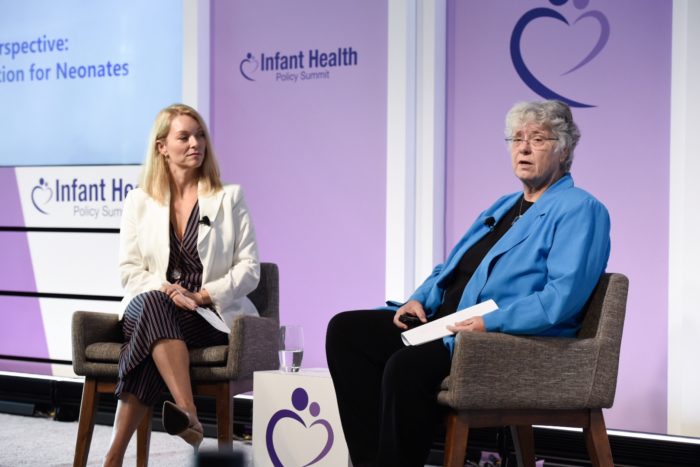
But the process is rife with challenges. Only about 40% of studies of pediatric drugs are successful, McCune noted. She emphasized the role of partnership, encouraging nonprofits and other stakeholders to join alongside regulators and researchers to improve options for treating infants.
Respiratory Care
Respiratory care is one area where continued policy progress is needed. In a conversation with Ashley Darcy Mahoney, PhD, of The George Washington University School of Nursing, Donald Null, MD, of UC Davis Children’s Hospital, described the improvement he’s seen during the course of his career. It can take “a long time” for advances to make their way through, Null noted, and even then, policy often lags behind.

Erin Thatcher of PPROM Foundation knows that all too well. The mother of fraternal twins born prematurely, Thatcher described the impact of respiratory syncytial virus on her daughter, now 7, who still battles asthma-like symptoms from the disease. The effects of RSV “can last for years,” Dr. Null explained.
The panel spoke to the Academy of American Pediatrics Committee on Infectious Disease guidelines from 2014 that effectively reduced the number of infants who receive RSV prophylaxis. Of those guidelines, Thatcher noted, “I wish they’d look at long-term outcome…the policies are not taking into account what’s happening to families.”
Tubing Safety & Maternal Nutrition
Infant health, safety and guidance also came to light in updates provided by National Coalition for Infant Health Executive Director Susan Hepworth. On the topic of tubing and connector systems used in NICUs, Hepworth alluded to hospitals’ being pressured to incorporate a tubing connector system known as ENFit, which can present safety challenges for infants. Hepworth emphasized the importance of thoughtful consideration by hospital systems and NICUs, which should make decisions based on what’s best for their patients.
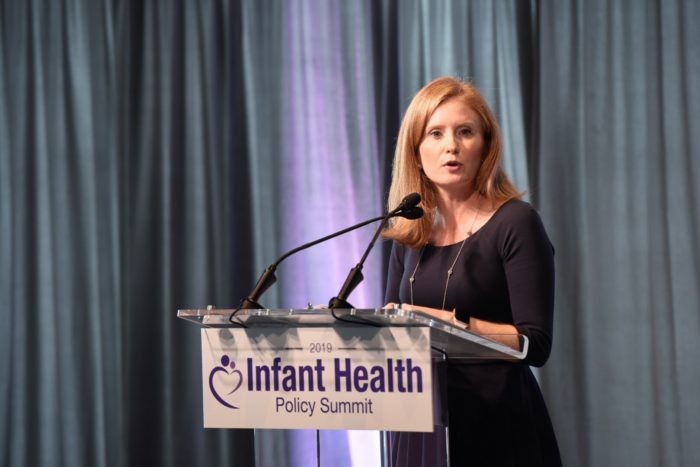
Hepworth also addressed new guidelines on pregnant mothers and fish consumption. Recently revised FDA advice could, Hepworth noted, “help pregnant women confidently add more seafood to their diet, with the goal to have pregnant women eat, on average, as much as 6 times more seafood than they currently do.”
See footage of the event from Facebook Live and explore photos and online activity from the day using #InfantSummit19.
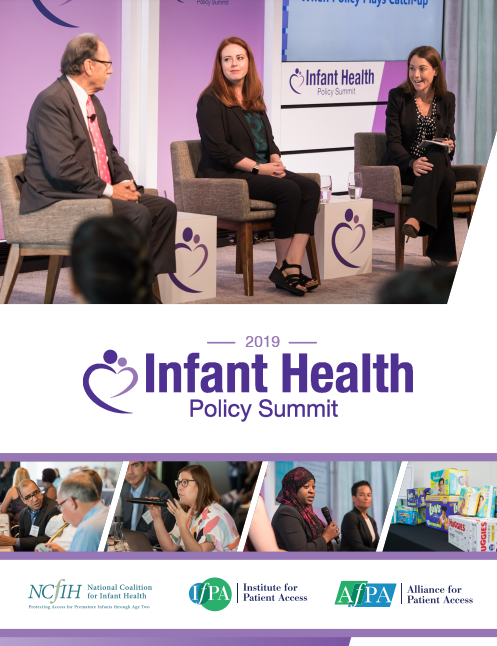
Categorized in: Summits

